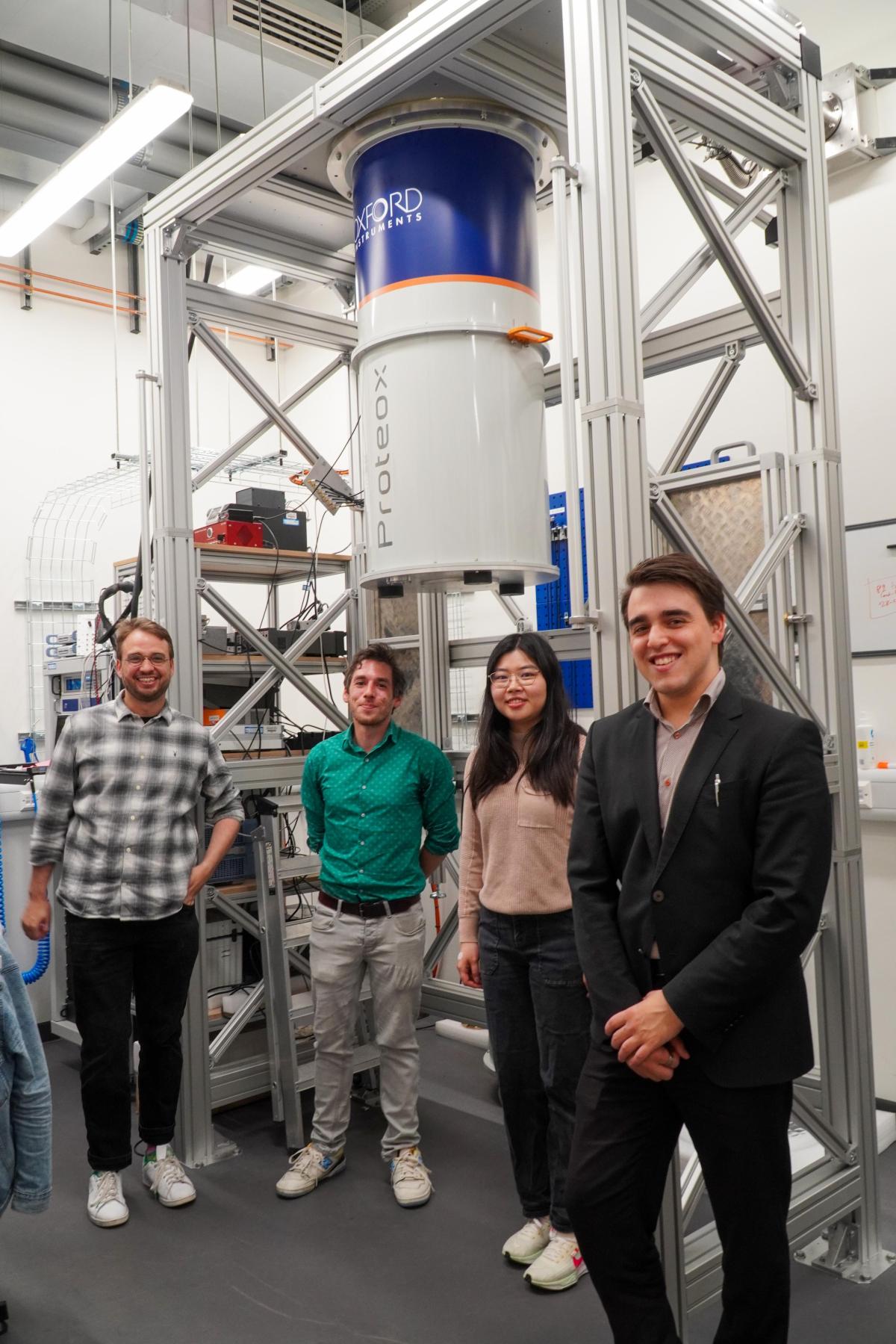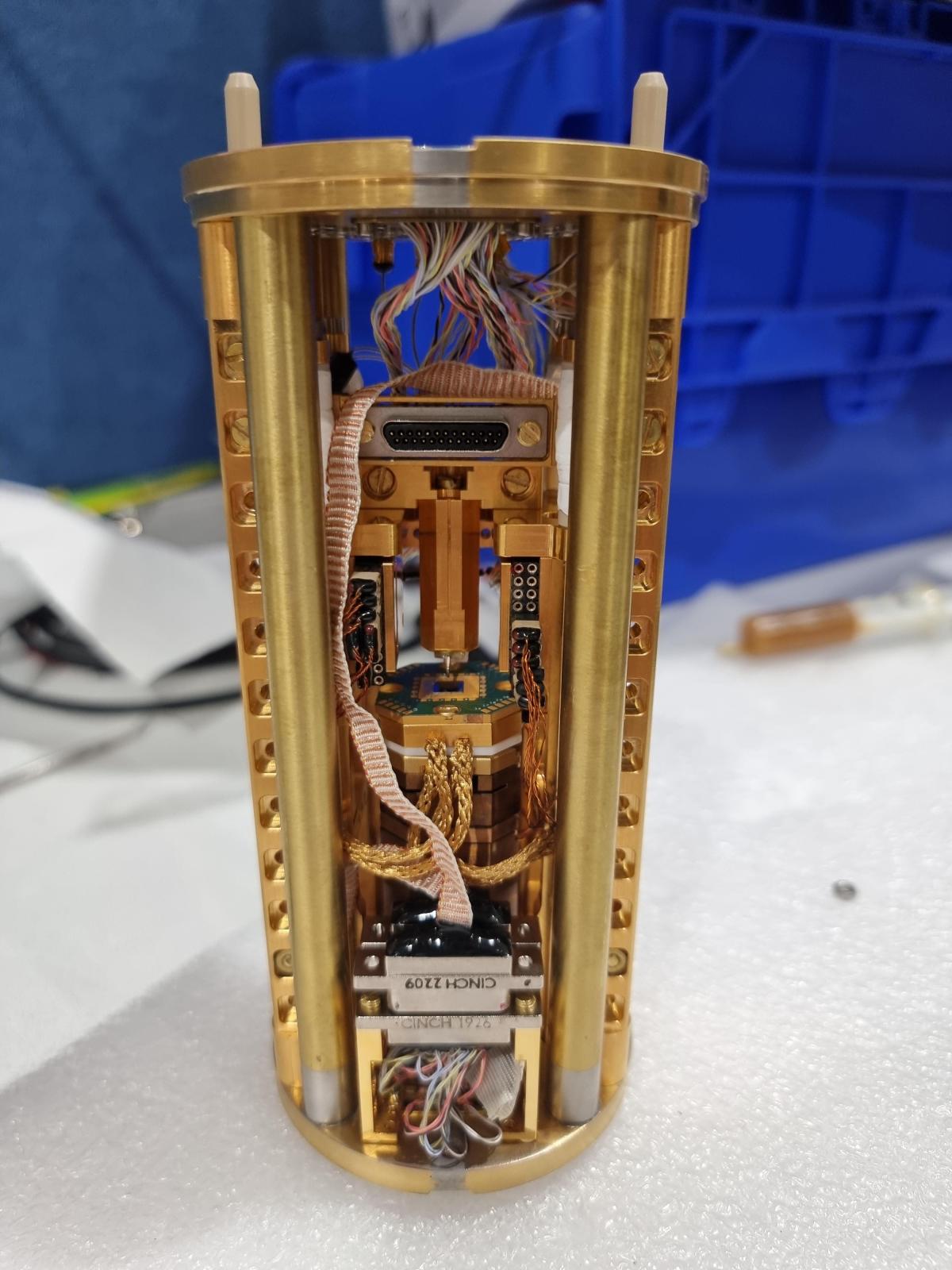Applications
 Part of the Oxford Instruments Group
Part of the Oxford Instruments Group
Expand
Collapse
We recently spoke with Dr Malcolm Connolly from Imperial College London about his research using nanoelectronic devices for applications in quantum computing. Imperial’s Quantum Science and Device Facility (QSDF) is the first research centre to integrate a scanning probe microscope (SPM) into a bottom-loading Proteox system, designed to reduce experiment turnaround times. The system’s low-vibration performance is crucial for enabling Imperial’s research. With only a few labs globally achieving SPM integration with cryogen-free dilution refrigerators, Dr. Connolly offers valuable insights into his current projects, the challenges of quantum hardware development, and a promising new approach to making topological matter in quantum devices.
What are the main areas of focus in your current research?
The QSDF is focused on advancing quantum measurement science and developing devices that overcome critical bottlenecks in scaling quantum hardware. My team wants to identify the critical properties of superconducting and semiconducting materials necessary for building high-quality qubits, while also exploring innovative concepts that leverage topological physics to achieve robust, protected performance.
What are some of the main challenges you face in your research?
One of the main challenges is deciding whether to harness or mitigate the fascinating quantum effects that emerge in nanoelectronic devices at temperatures near absolute zero. At these extreme conditions electrons behave like particles and waves, leading to surprising and often counterintuitive phenomena. We need to identify which physics is most critical to device performance, but also nurture the curiosity to explore potential discoveries that could have long-term value. The new Proteox systems at the QSDF are helping us achieve that balance, enabling precise, targeted investigations while opening the door to new discoveries.
How has the Proteox system impacted your research productivity?
Oxford Instruments and Attocube have integrated a tuning-fork-based atomic force microscope (attoAFM III) into a Proteox bottom-loading sample puck for us. This bottom-loading system will allow us to change samples and perform experiments more frequently, reducing the time to cool a device from room to base temperature in under a day—a critical advantage for quickly testing new devices.

The Quantum Devices Lab at Imperial
The system’s low-vibration performance will be essential for capturing high-quality images with the microscope, and its overall reliability lets us focus on interpreting results rather than how to keep the fridge cold. It is great to have the cryogenics just work in the background, allowing us to concentrate fully on data analysis and designing experiments.
Can you tell us about any recent developments in your work?
The recent surge of interest in quantum computing has made working with superconducting qubits almost routine. While the key challenge for industry is how to maintain qubit performance at scale, we have started to flip this script: how can qubits be leveraged as a tool to explore and understand materials? An example of this is our recent study of qubits integrated with topological insulators. These materials hold significant technological promise by confining electrons to surfaces and edges, which could potentially reduce the impact of noise and disorder. Many fundamental questions remain about the practical realisation of these benefits, and qubits are a valuable tool for addressing these uncertainties. The Proteox’s ability to operate across a wide temperature range (< 10 mK - 30 K) is particularly advantageous, enabling us to observe the transition from classical to quantum behaviour of the device.
Would you be able to elaborate on the new approach to topological matter that you are taking?
We're investigating a new approach that replaces large external magnetic fields with intrinsic magnetism within the device, which could enable the creation of topological matter using cleaner electronic materials. Our recent results suggest we are on the right track, with further optimisation of the magnetic materials being key. The well-established role of magnetism in conventional electronics means we already have a set of tools and techniques to refine and advance this method. The next critical step is to use the microscope to directly verify that the magnetism is influencing the electrons in the way we think!
How do you see your research evolving in the near future?
In the coming years, we plan to collaborate with scientists from both academia and industry working on quantum devices, who could benefit from using microscopy to gain insights into how nanoscale structures affect critical metrics such as coherence and stability. We have also only begun to tap into the potential of quantum science concepts to uncover previously inaccessible information about electronic devices. How can quantum entanglement be harnessed as a powerful tool to detect topological matter? Could innovative instruments and techniques be developed to leverage entanglement for breakthroughs in materials science? These are exciting questions driving our future research.
The Oxford Instruments Proteox is designed to help increase research productivity. A key way it does this is with Secondary Inserts (SIs) which can be exchanged between systems, enabling experiments to be set up on a workbench prior to exchange. This reduces the time between cool downs when changing significant wiring on the system or when changing experimental setups in a multi-user facility.
The Secondary Insert can be ordered with our patented bottom loading system as an option. This enables rapid sample exchange and can be coupled with magnet integration, or as we did for Imperial, a microscope. It’s only possible to work in this way thanks to another benefit of Proteox: the low vibration performance of its frame, which needs no additional vibration isolation or extra support.
The low vibration environment of the standard Proteox was vital to supporting this research at Imperial, and the measurements taken have shown excellent resolution with no additional vibration isolation. It is great for researchers to have access to this type of performance with no additional costs of adding air mounts or other methods to reduce vibration to the experiment.
For Imperial, Oxford Instruments led the project to integrate Attocube’s AFM into Proteox. We were responsible for the system passing both the Factory Acceptance Test (FAT) and the Site Acceptance Test (SAT). Talking about our partnership, Peter Kraemer, CEO of Attocube said: “The integration of our atomic force microscope with Oxford Instruments' systems represents a step forward in precision measurement capabilities. This collaboration allows us to offer researchers and industry professionals improved tools for nanoscale exploration and manipulation. We believe this combined approach will be beneficial for various applications in quantum research and materials science, providing users with enhanced control and accuracy in challenging experimental conditions."

Integrating Attocube’s AFM into a Proteox puck
Find out more about Proteox here and contact us for more information on how we can support your research
Further Reading